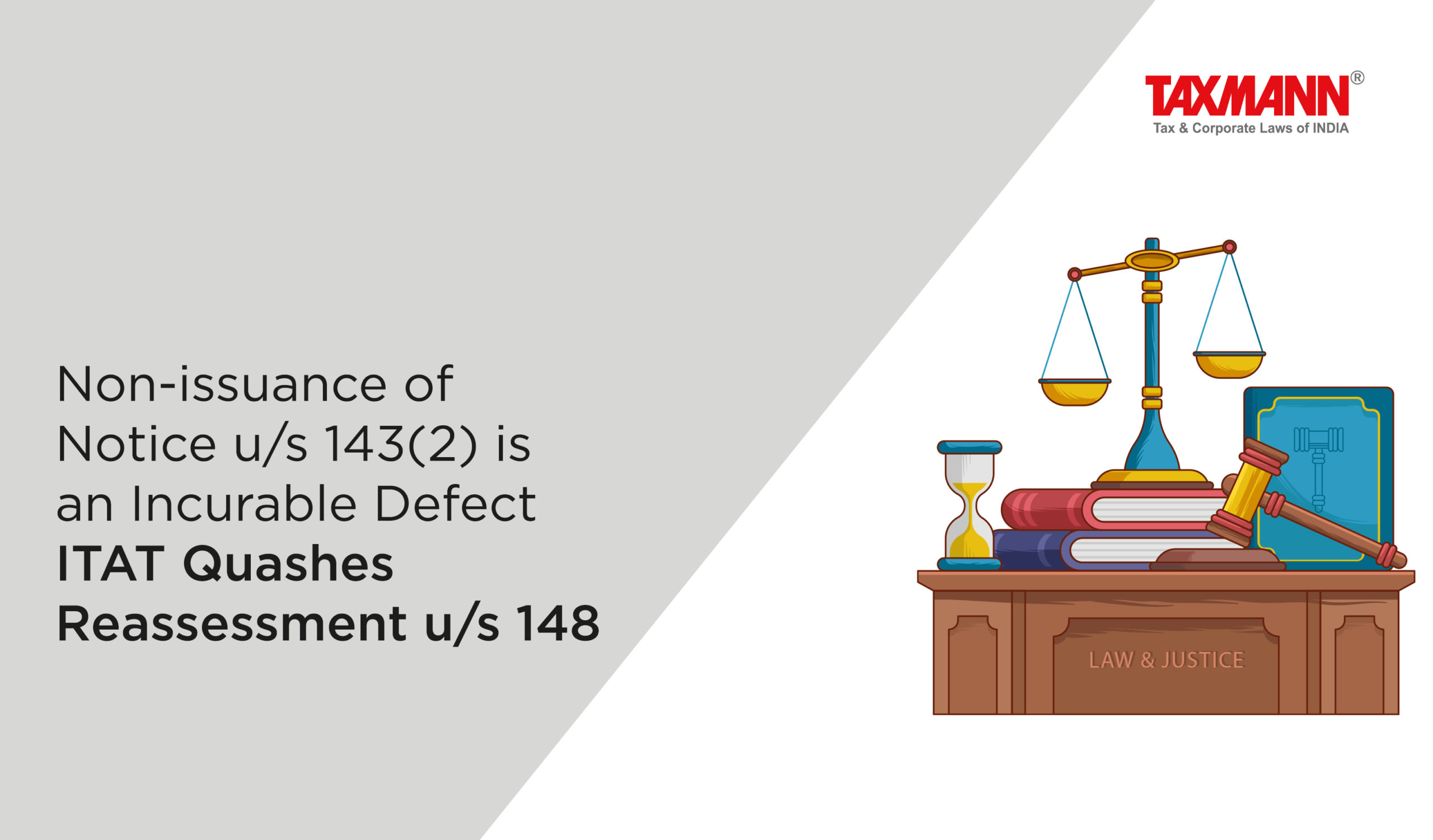Non-issuance of Notice u/s 143(2) is an Incurable Defect | ITAT Quashes Reassessment u/s 148
- Blog|News|Income Tax|
- 2 Min Read
- By Taxmann
- |
- Last Updated on 8 August, 2023

Case Details: Major Suresh Yadav (Retd.) vs. ITO - [2023] 153 taxmann.com 159 (Delhi-Trib.)
Judiciary and Counsel Details
-
- Kul Bharat, Judicial Member
- Mukesh Kohli, CA for the Appellant.
-
Om Parkash, Sr. DR for the Respondent.
Facts of the Case
Assessee-individual filed a return of income for the relevant assessment year. Subsequently, the Assessing Officer (AO) issued a notice under section 148 of the Act to the assessee requiring him to furnish a return within the prescribed time limit. In response, the assessee requested AO to treat the original return he filed as the one filed in response to the notice issued under section 148.
Unsatisfied by the response, without issuing any notice under section 143(2), the AO continued to make additions to the assessee’s income on an estimation basis.
Considering it obligatory for the AO to issue a notice under section 143(2) after the request by the assessee to treat his earlier return as filed in pursuance to the notice under section 148, an appeal was filed to CIT(A). CIT(A) dismissed the appeal, and the matter reached the Delhi Tribunal.
ITAT Held
The Tribunal held that the assessee had requested to treat the return of income filed under section 139(1) of the Act as in response to section 148. Having noted this, the AO proceeded to frame the assessment. However, nothing was recorded in the assessment order whether any notice under section 143(2) was issued to the assessee.
The AO itself had admitted that issuance of notice under section 143(2) of the Act was not ascertainable. Thus, in the absence of any proof of issuance of notice under section 143(2) and the service of the same to the assessee, it can be inferred that the AO issued no such notice to the assessee.
The law is well settled that non-issuance of notice under section 143(2) of the Act is not a curable defect. The failure of AO in reassessment proceedings to issue a notice under section 143(2) prior to finalizing the reassessment order cannot be condoned. Therefore, the impugned assessment order suffered from patent legality and deserved to be quashed.
List of Cases Reviewed
-
- Pr. CIT v. Shri Jai Shiv Shankar travels (P.) Ltd. [2015] 64 Taxmann.com 220 (Delhi) [Para 11] – followed.
Disclaimer: The content/information published on the website is only for general information of the user and shall not be construed as legal advice. While the Taxmann has exercised reasonable efforts to ensure the veracity of information/content published, Taxmann shall be under no liability in any manner whatsoever for incorrect information, if any.

Taxmann Publications has a dedicated in-house Research & Editorial Team. This team consists of a team of Chartered Accountants, Company Secretaries, and Lawyers. This team works under the guidance and supervision of editor-in-chief Mr Rakesh Bhargava.
The Research and Editorial Team is responsible for developing reliable and accurate content for the readers. The team follows the six-sigma approach to achieve the benchmark of zero error in its publications and research platforms. The team ensures that the following publication guidelines are thoroughly followed while developing the content:
- The statutory material is obtained only from the authorized and reliable sources
- All the latest developments in the judicial and legislative fields are covered
- Prepare the analytical write-ups on current, controversial, and important issues to help the readers to understand the concept and its implications
- Every content published by Taxmann is complete, accurate and lucid
- All evidence-based statements are supported with proper reference to Section, Circular No., Notification No. or citations
- The golden rules of grammar, style and consistency are thoroughly followed
- Font and size that’s easy to read and remain consistent across all imprint and digital publications are applied



 CA | CS | CMA
CA | CS | CMA
